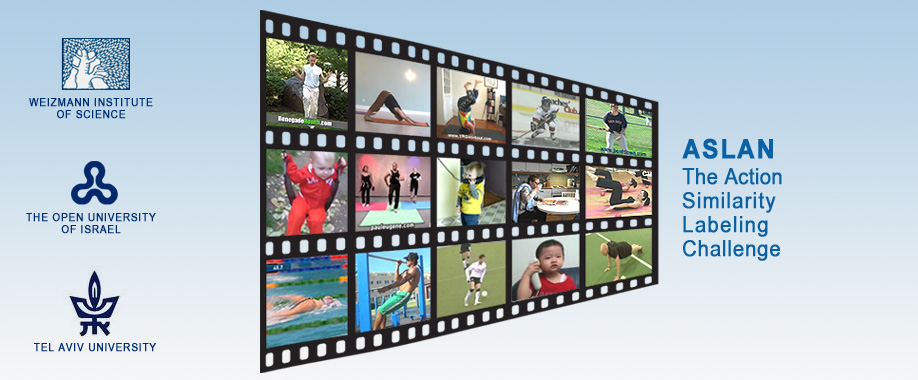Events and News
-
June 23rd, 2013, 1st IEEE International Workshop on Action Similarity in Unconstrained Videos (ACTS'13), held in conjunction with CVPR'13, Portland, Oregon.
The ACTS'13 workshop is primarily designed as a performance competition on the ASLAN benchmark. Please see workshop wepage for more details.
Introduction
Welcome to The Action Similarity Labeling (ASLAN) Challenge: a video database of actions and a full testing protocol for studying action similarity from videos. Detailed description of the database, benchmark and baseline experiments can be found in the following paper:
-
Orit Kliper-Gross,
Tal Hassner,
and Lior Wolf
The Action Similarity Labeling Challenge
IEEE Transactions on Pattern Analysis and Machine Intelligence (TPAMI), 34(3), March 2012.
[ PDF ] [ BibTeX ]
The ASLAN set contains 3697 action samples from 1571 unique YouTube videos divided into 432 non-trivial action categories. An "action sample" is defined as a sub-sequence of a shot presenting a detected action, that is, a consecutive set of frames taken by the same camera presenting one action. The action samples have been manually labeled with the name of the action carried out in each of them. 316 of the categories contain more than one sample.
ASLAN General Statistics:
| Number of classes | 432 |
| Number of action samples | 3,697 |
| Number of URLs | 1,571 |
ASLAN Class Statistics:
| Average number of samples per class | 8.5 |
| Number of classes with > 1 sample | 316 |
| Class with largest number of samples | "Handstand" 91 samples from 64 urls |
ASLAN Videos Statistics:
| Number of long samples (duration > 10 sec) | 71 |
| Number of short samples (duration < 1 sec) | 187 |
The ASLAN benchmark is a binary pair matching (same / not-same) benchmark.
The goal of the benchmark is to decide if two videos present the same action or not,
following training with same and not-same labeled video pairs. Actions included in the test sets are not available at training.
This means that there is no opportunity during training to build action models for actions present in the testing.
Here, we make the complete ASLAN database, as well as benchmark protocols
publicly available for the research community.
In addition we provide descriptor encodings of the action samples using state-of-the-art methods.
